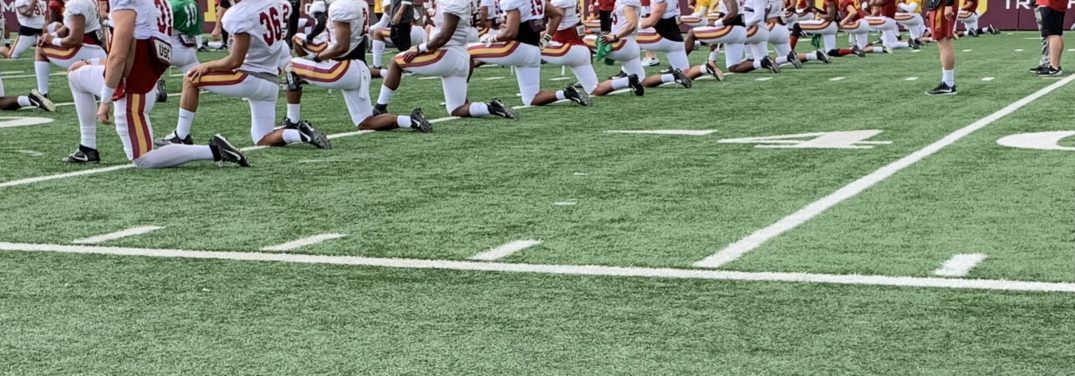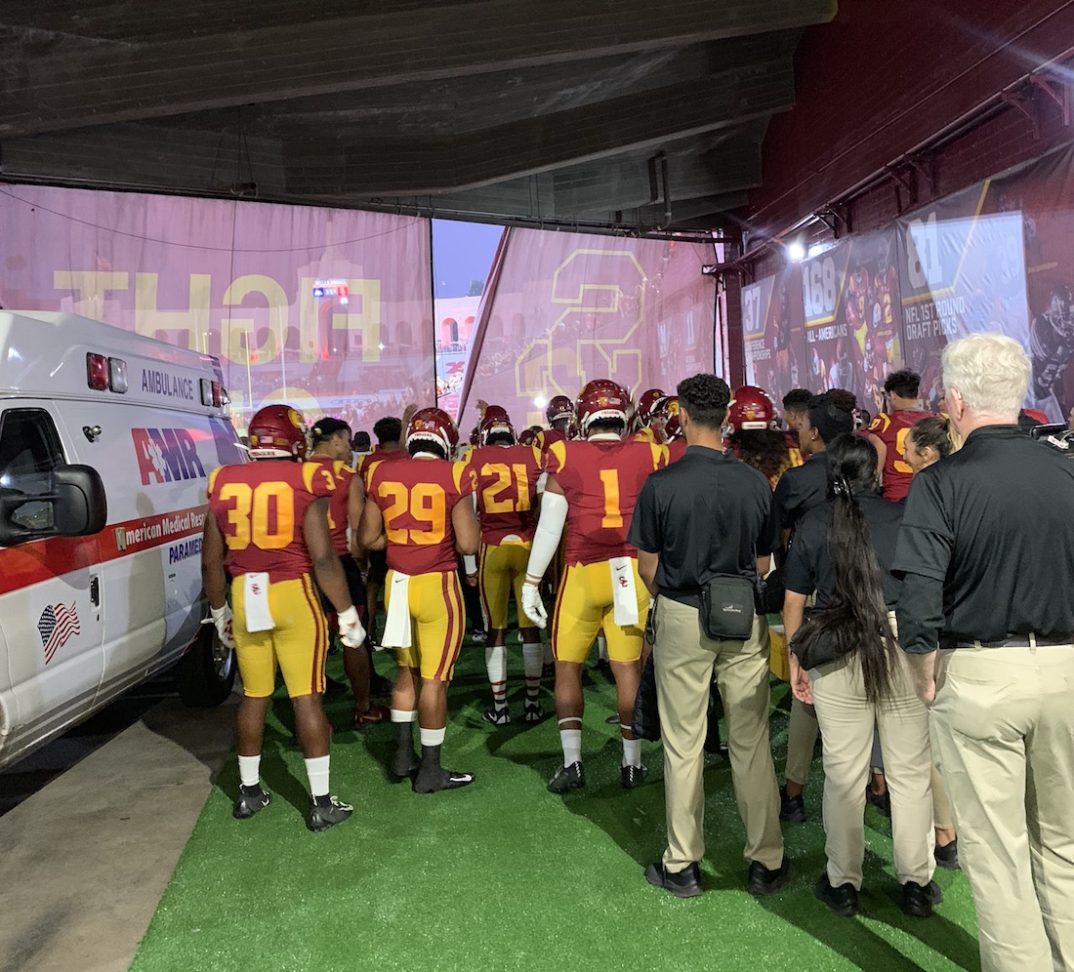As we approach the end of football season, there is one injury that we have heard of several times throughout the year (and past years as well). The ACL tear. Most sports fans have seen this listed on the injury report and heard the announcers talk about concerns for this when a player goes down on the field, but what is it? Why is it a big deal, how does it happen, and what is typically done about it?
First, knowing a little anatomy of the knee is important. The ACL – or anterior cruciate ligament – is an important structure inside your knee joint. We have 4 ligaments in and around that area, named for where they are located. Anterior (front) and posterior (back) cruciate ligaments, and medial (inside) and lateral (outside) collateral ligaments. Today we focus on the ACL because it is usually the most ‘tragic’ when injured in sports. By tragic, I mean the one that is the most worrisome for an athlete because of the long treatment and recovery process that often alters one’s career short and long term.
The ACL connects the bottom bone in the knee (tibia) to the top bone of the knee (femur) from front to back. It plays a key role in stabilizing the knee. In medicine we would say it “resists anterior translation of the tibia on the femur.” Stick with me here… this means in regular language that it stops the bottom bone of the knee from sliding forward in relation to the top bone during normal movement, aka inside the knee joint where it bends. This bending is what allows us normal knee motion needed for walking, running, jumping, playing. But we need something to help keep the bones attached to one another or else the knee may feel unstable (jelly-like) when we put stress on it. [Think of the knee as a door hinge where the ACL is the pin that connects the two pieces of the “hinge”; without this the door can swing open and closed gently, but if it’s pushed too hard the hinge may not line up properly and may become damaged]. Not an ideal situation if one is interested in getting back to doing higher impact activities like playing football.
If the ACL is torn the knee becomes unstable because the bottom bone can shift away from the top bone. The cool thing the human body is that there are often redundant systems. For the most part (although not always for every person) normal walking and low-impact day-to-day life can still be achieved without the ACL because the other ligaments and muscles around the knee can pick up the slack to provide stability. This means even without an ACL, for daily life activities, many people move about fine. The problem is with any sudden or shifty movements, such as cutting in sports or in high-impact jobs like law-enforcement or firefighting where folks are required to do movements that aren’t straight forward or backwards. These types of movements are more complex and require more stabilization, so without an ACL the knee can feel unstable and even give out. For football and other sport athletes, one also would not get the control or explosive power she or he needs to play.
An ACL tear most likely occurs when the leg is forced in a way that stretches the ligament too far. Remember, the ACL blocks forward movement of the bottom part of the knee. Consider a a football player whose foot is planted to the ground when his knee gets pushed backwards, pushing the top bone away from the bottom bone. Pop! The ACL is overstretched and gives way. This is just one example, and there are of course other ways this happens. Sometimes it involves a collision with another player (as described above) and sometimes it involves getting the leg in an awkward position when a person is running or jumping with the knee buckling inwards/backwards due to the force of the jump or a bad landing. In this case, it is simply the lack of control and force of the jump landing or cut that causes the tear. We tend to think of these “non-contact” tears occurring most frequently in young female athletes (maybe a teenage basketball player) that hasn’t developed full hip/knee control.
The tearing of an ACL is an abrupt injury and not usually subtle. Sometimes people hear a pop (but not always), feel a pop, have sudden onset of significant pain, and usually fall to the ground. Most of the time the injured can’t walk easily (if at all) and don’t usually keep playing the game after. The knee swells up from the inside due to the trauma (effusion). I usually ask patients if it swelled up like a water balloon as an analogy. A former mentor of mine taught me when I was learning about knee injuries that a young person running or cutting during sports with a sudden burst of pain with a pop in the knee and large swelling is an ACL injury until you prove otherwise. This still rings true for my patients today. #mentor
To diagnose the ACL tear we first talk about what happened when the injury occurred in great detail. Then, we do an office examination of the knee, as well as the hips and lower legs. Looking at the other nearby joints is important! Just because it seems that it might be an ACL tear it doesn’t always mean that is our answer. We complete a few special maneuvers that help clue us in to what possible problem could be happening inside your knee. These maneuvers are helpful to distinguish other injuries that present in the office like an ACL tear. This exam also helps us determine what next steps to take or if there is concern for other associated injuries (ACL tears often occur with other injures such as MCL tears, meniscus problems, and bone or cartilage injuries).
So you tore your ACL, what now? Since it is such a crucial ligament for knee stability, most highly active people or athletes should discuss surgery to repair or reconstruct the ligament in the knee. It does not grow back. It does not scar into place or heal. That said, it is important to note that older patients or people who are less involved in side-to-side/cutting sports or activities may not need surgery. Be sure you have a discussion with your doctor about what the benefits of surgery are for you, the associated risks of the procedure, as well as the expected long term outcomes. We practice medicine using the guide of high quality research, and if the studies show that you may do just as well without surgery, that may be the best way to treat your specific injury. Most important is to have these discussions with an orthopedic sports trained surgeon. They will discuss options, the optimal timing to have surgery if it is thought to be best for you, and also very importantly your rehabilitation and expectations for recovery.
Whether one has surgery or is treated without operation, he or she will need extensive physical therapy/rehab. It takes many months for one to get back on the field! One has to be patient. For professional athletes that have dedicated athletic trainers and rehab specialists, these are season ending injuries. Often with great rehab, they can return in 6 months (at the earliest) though it can take 1 or more years to reach the prior level of sport. But these are gifted individuals with many many resources. For the average injury, it will be at least 1 year before one may feel 100%. And keep in mind, once a person has had an injury, and then had surgery, it is quite possible the knee will never feel 100%. [Stay tuned for my article discussing preventing injuries like ACL tears.]
Stay healthy-

